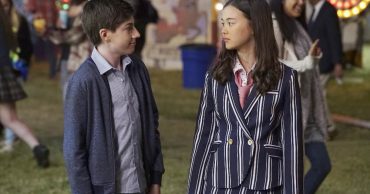I’ve lost track of how many times I’ve heard someone claim that we’re living in the so-called “Golden Age of Television.” Often, that claim comes at the chagrin of some older TV fans, who point to shows like Cheers and Seinfeld and ask, “do you really expect modern TV writers to top that?” You might think that one look at the endless expanse of content and the sheer number of Certified Fresh shows might be enough to make the case. But I’m not sure it’s as simple as that. Let’s take a look at the question from every angle and see what we can find.
Quality or Quantity?
There’s absolutely no question that there’s more television programming being produced now than ever before.
Besides the hundreds of specialized cable channels producing original content, there’s also the enormous amount of original content produced by streaming services. Netflix alone is looking at as many as 700 original titles this year between television shows, movies, documentaries, and stand-up specials. Hulu and Amazon Prime have seen the movie as a challenge to produce their own content to attract subscribers.
But a lot of content doesn’t always mean good content. While shows like Stranger Things, The Handmaid’s Tale, and The Tick have garnered universal acclaim, that doesn’t necessarily spell success for the rest of their content. I’ve seen my share of stinkers produced under the Netflix brand. And mathematically, the odds aren’t in their favor. More shows means more room for duds, and for every great series, there’s two or three mediocre shows and a few that are straight up bad. It’s essentially the same problem that we had scrolling through 250 cable channels and finding nothing to watch, except now it’s all on demand.
Detractors of modern television might point to the ratio of good shows to bad to prove their point. And while it’s undoubtedly true that there are currently more bad TV shows than there were in decades past, our memories are tinted a bit.
When we look back on the television shows of yore, our memories are unintentionally selective. There’s no denying that shows like I Love Lucy and The Brady Bunch are universally beloved, there are a number of shows that most of us have forgotten about, like Barney Miller. Even the best shows weren’t always consistently excellent. You don’t need to look any further than the original Star Trek to see that many classic shows had some really bad episodes.
A majority of current TV shows might be mediocre or bad, but that has always been true, even when there were only a handful of programs on the air. And when you see how many shows on the IMDb top 250 were produced in the last decade, it seems pretty obvious that quantity and quality aren’t mutually exclusive.
The Rise of the Long-Format Story Arc
Before VCRs (remember VCRs?), the only time you could watch a show was when it aired. Rewatching episodes was rare. So by the time a show’s next episode would air, there was no guarantee that the audience would remember what had happened the week before.
For a while, the default television format was to tell episodic stories. The characters rarely faced any conflicts that weren’t resolved by the end of the thirty-minute episode. Every once in a while, it would take two episodes, linked with an awkward “To be continued…”
These easily digestible, single-serving episodes served their purpose, but they didn’t always make for very compelling storytelling. As a writer, if you only have thirty minutes (including commercial breaks) to get your characters in and then out of trouble, they can’t actually get into that much trouble.
But with the advent of home releases, writers were able to extend a storyline over an entire season of a show. Free from the need to resolve a conflict by the end of the episode, they were able to tell much larger stories. This serial format has carried into the streaming era, where it has evolved into binge watching. While some shows might go overboard with cliffhangers for no other purpose than to keep the viewers tuning in each week (I’m looking at you, Lost), most are able to use this format to tell compelling and rewarding stories that work for no other format. Imagine how boring Game of Thrones would be if the conflict wrapped up every episode.
Increasing Prestige
A few years ago, legendary film star Anthony Hopkins wrote to Bryan Cranston, “Your performance as Walter White was the best acting I have seen — ever.” In an email sent from one actor to the other, Hopkins gushed over every detail of Breaking Bad, a work that he called “absolutely stunning.”
Not long ago, to hear a film actor of such caliber say anything like that about a television series was almost unimaginable. Television was film’s kid brother, dressed up in cheap costumes and performed by all of the everyone that wasn’t good enough for film. It was a stepping stone for actors trying to break into film. Television was hampered by poor writing, low budget effects, and melodramatic acting. If a film actor appeared on a TV show, it was a massive cameo. If a movie star starred in a television show, it was the last dying gasps of their career.
This line has blurred significantly over the last decade, with actors, writers, and directors jumping between film and television regardless of career path. Don’t forget: even Anthony Hopkins himself has gone on to do TV work now.
With the stigma of television dead and buried, we’re now in an age where television can attract–and keep–the best talent around without needing to forgive its inferiority to film.
There’s no denying that there are plenty of shows that aren’t worth the cost of the film they’re shot on–or the…memory cards they’re stored on? But even among the piles of brainless reality shows, thrillers that try too hard, and comedies that just aren’t funny, there’s definitely enough evidence to back up claims that we are in fact in the Golden Age of Television. I say keep the shows coming.
 Follow Us
Follow Us




